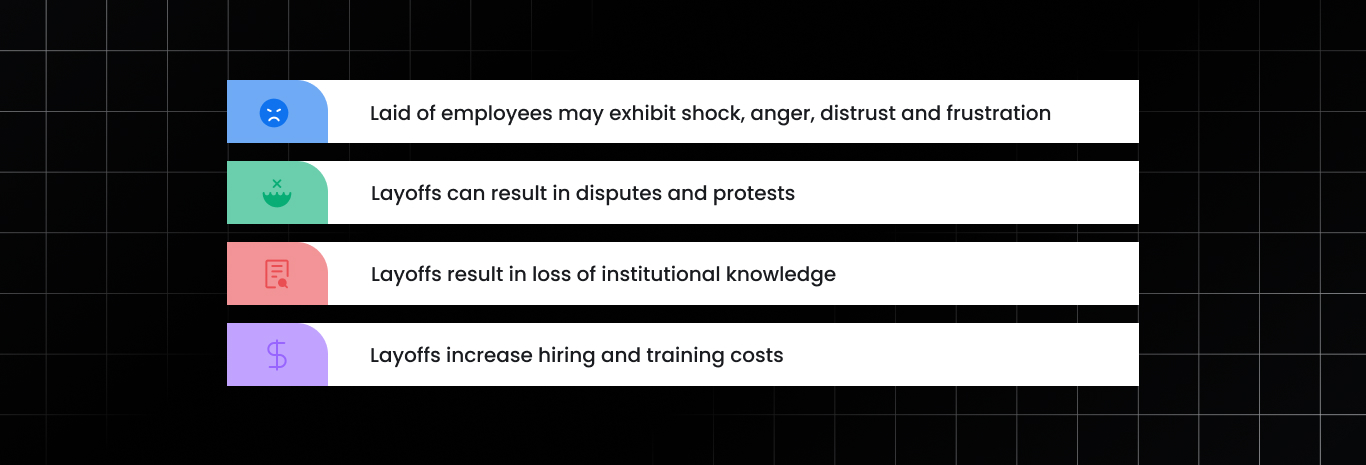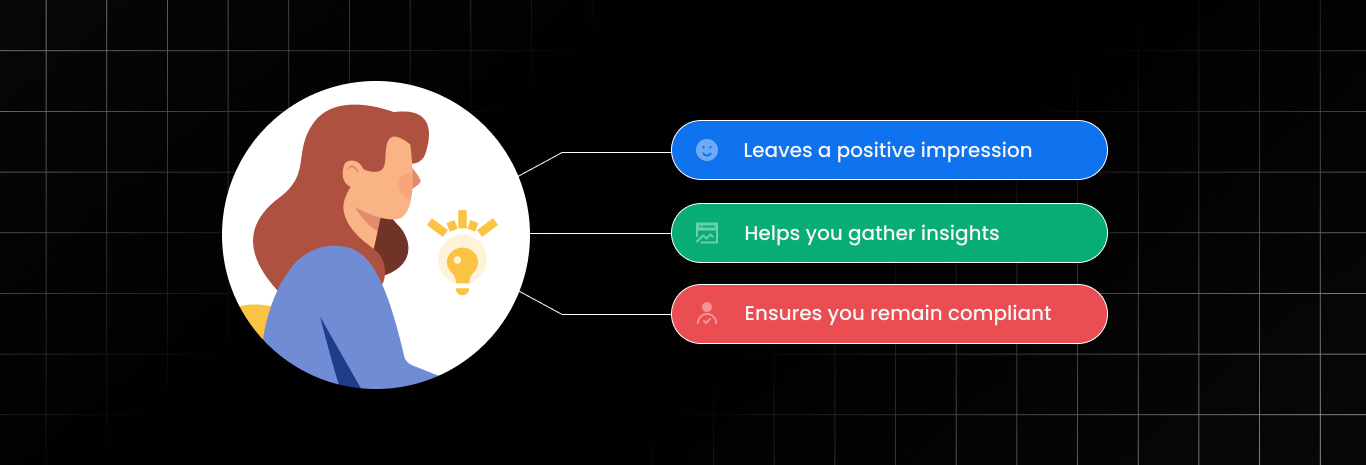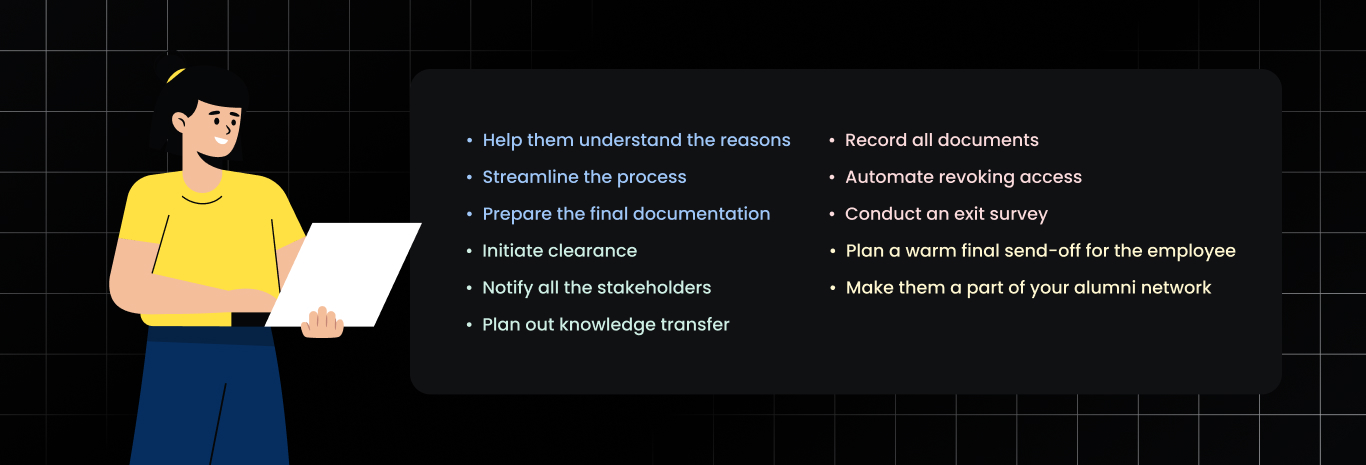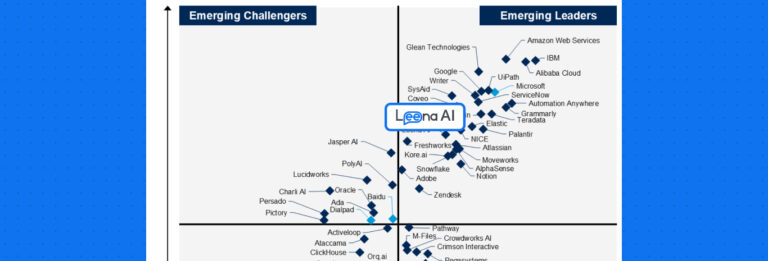Given the global economic uncertainties looming, enterprises have been experiencing a slowdown in their business growth. From budget cuts to refraining from salary hikes, several organizations have taken severe measures like layoffs to take control of the resources available to them.
As per Crunchbase news, more than 91,000 workers in the US tech sector were laid off since 2022. Further, employees of other departments across industries have also been let go in the last quarter of 2022.
While some call it a necessary measure for the companies, others consider it insensitive due to the lack of strategic business planning.
But either way, all of this had led to a disgruntled workforce that trusts nobody. This has led to quiet quitting, dissatisfaction among the workforce, and an overall negative experience at the workplace.
What is the negative impact of employee layoffs on an organization?

While downsizing occurs to bring back the spending on resources in control, keeping business revenue in mind, here are some of the cons of the severe optimization process:
Laid-off employees may exhibit shock, anger, distrust, and frustration
Even if they have had a smooth tenure at your organization, the layoff can trigger several negative sentiments. These can result in rumor-mongering until the day they leave and afterward as they share every negative detail and experience in their job role with outsiders like communities, professional platforms, or even your potential talent pool. This hampers your brand health as well as reduces the chances of you finding the right talent in the future.
Layoffs can result in disputes and protests
Organizations that laid off employees in large numbers witnessed signs of rebellion. This included both physical disputes around policies and payments and online protests against the company and what it stands for. Either way, it can hamper your existing employee experience and negate your market standing.
Layoffs result in loss of institutional knowledge
Institutional knowledge refers to the experience, data, best practices, and other information that company employees develop at work. When an employee is laid off, this information goes with them – especially if they were not offboarded properly or have had a negative experience. As a result, no documentation or notes are created for anyone to use.
Layoffs increase hiring and training costs
While downsizing might ensure resource management, hiring becomes the next step for the organization. However, hiring new talent and training them is even costlier than increasing the average salary hike of a laid-off employee.
In addition to the above, employee layoffs also result in the company incurring unemployment costs. So how do you navigate these losses and ensure that both the company and the employees part ways on a friendly note?
By investing in good offboarding!
Why is employee offboarding important during layoffs?

From the time of great resignation to quiet-quitting and employee layoffs, employee offboarding has proven to be as important as onboarding. If organizations pay attention to how they offboard someone who has just lost their job suddenly, they can reduce the risks and make the going a little easier for employees.
Leaves a positive impression
By not hurrying the employee through the door and bringing their role to a slow close, you allow them to let the news sink in. It also enables them to think through their next steps and seek advice from those in the leadership team or managers they value. Employee offboarding ensures that your workforce does not feel like they are being gotten rid of.
Helps you gather insights
From their experience at the organization to the institutional knowledge garnered from their work, a good employee offboarding can ensure you learn from it all. This way the laid-off employee gets a platform to raise their questions, concerns, and apprehensions, and even share the feedback directly with the organization – which can go a long way in reducing the negative chatter that happens online when not given a chance to speak.
Ensures you remain compliant
Having proper offboarding ensures compliance and proactive risk management. Since a laid employee could have negative sentiments, the organizations can keep themselves safe from data leaks, misuse of company assets and systems, and legal issues due to misunderstanding.
Learn more about the importance of employee offboarding here.
How can you ensure a good offboarding for a laid-off employee?

While the core elements of employee offboarding for the usual times and employee layoffs remain similar, here are a few things you need to pay attention to:
Help them understand the reasons
Many organizations make unexplained sudden cuts or use performance reviews as a reason for the layoff. Instead of leaving them with a thousand questions and doubts about their skills, be truthful about the situation. While you need not share all the reasons, staying close to the truth will help keep things positive.
Streamline the process
As soon as you decide on the employees that need to let go, create a simple workflow that HRs can follow. The workflow can include who you want to include in the process to the tasks you need to line up until the employee exits to ensure everything is in place – they have the documents they need, and you have all the company assets back.
Prepare the final documentation
Even when laid off, employee documentation can be lengthy. But it is a necessary process that ensures complete compliance at each step. We recommend the following documents:
- A signed letter of termination stating the reason for departure
- Non-disclosure agreements protect both the employee and the employer
- Benefits and tax documents
- Severance package agreement
- Letter of recommendation
Prepare these documents ahead of time in the applicant tracking system. This will keep things appropriately dated and readily available when the employee offboarding begins.
Initiate clearance
You want to be doing something other than holding back a laid-off employee simply due to the lack of a no-dues certificate. We recommend automatically triggering offboarding clearance right after the employee gets notified of the layoff.
Using an AI-driven offboarding tool, you can automate micro-tasks for clearance. From company data to system access and organizational assets, HRs can slowly take the employee through the offboarding checklist without overwhelming them with too many tasks.
Notify all the stakeholders
If you lay off employees at scale, it can be challenging to keep everyone in the loop. This is where setting up automated notifications to the key stakeholders comes in handy.
It includes notifying the manager, IT, payroll, admin, and security about the layoff. Doing so helps them plan the next steps and prepare their side of the documents and procedures promptly.
Plan out knowledge transfer
Remember that when you lay off an employee, the information about their job role and how to do the work also goes with them. To ensure that your operations do not break after their exit, set up knowledge transfer sessions with the concerned employees or the successor based on their role.
To ensure this does not feel like a burden, we recommend automating the process to automatically allocate some time for the knowledge transfer during the offboarding. This will ensure that the employee does not feel like they are being used even when the company has decided not to retain them.
Record all documents
Ensure you maintain a record of all the policies and contracts you have agreed upon with the laid-off employee. It is critical to avoid running into compliance issues and other legalities when the employee leaves.
We also recommend using an HR tool that comes with a document management system. It will streamline document generation, collection, signing, and categorization. Doing so ensures you have all the information about laid-off employees and the agreements in case the need arises.
Automate revoking access
Once the employee exits, use automation to revoke access to systems and applications they used during their tenure. By automating the process, you can ensure nothing gets missed, preventing data leaks and breaches that may occur.
Conduct an exit survey
Even if you are laying off an employee, never let them feel unheard. Conduct an automated exit survey or interview to understand their thoughts on the layoff, what the organization could have done differently, or what they need to further progress in their career.
You must go beyond the responses to truly understand the sentiments of the laid-off employees. Use an HR tool that can roll out surveys and analyze sentiment to help you derive insights and be actionable in no time.
We also suggest following up with employees with negative feelings in a one-on-one meeting. A human touch goes a long way!
Plan a warm send-off for the employee
On the final day or the moment when an employee is leaving the premises, ensure you give them a warm send-off. It is vital to make their efforts and achievements at your organization feel seen.
You can do this by hosting a well-organized send-off get-together. Having various team members and managers that the employee worked with during their tenure at the function will also make the day memorable.
Make them a part of your alumni network
Make the post-exit experience of the employee a positive one as well. Automatically add them to your alumni network and share the benefits of staying in touch with those who currently work or have previously worked at the organization.
Ensure you highlight how everyone can help them through tough times. This could include emotional support or letting them know you will actively help them find a new job through their network.
Layoffs are tough. Do not make them tougher!
It is crucial to understand that employee layoffs are not easy – for both the organization and the employees.
While there is a lot of logic and contemplation behind the layoffs, there are also a lot of emotions riding right underneath. That is why organizations need to invest in and focus on how they offboard a laid-off employee.
Their experience during this time demonstrates how you reinstate vision, mission, and culture at the workplace. Therefore, do not think twice about investing in digital employee offboarding software.
Leena AI’s AI-driven employee offboarding software automates the entire offboarding process, from initiating clearance to conducting exit surveys. Its multilingual capability ensures personalized and seamless offboarding of any employee worldwide. Besides, the integration with third-party software enables HRs and employees to carry out all the operations in a single interface. HR leaders can even track metrics like turnover rate and analyze the exit interviews’ feedback to improve the overall employee experience at the workplace.
Besides automating, it streamlines the process and provides consistent offboarding experiences to employees without compromising safety and compliance laws.
If you want to see how our employee offboarding solution can help you, book a demo today!
FAQs:
Why are companies laying off employees?
Cost-cutting, subpar performance, and financial difficulties are some of the top reasons behind the substantial layoffs. Global inflation and economic recession have further added to the cause of cost-cutting in many industries.
How do employers choose who to lay off?
Many companies follow the rule of last in, first out to prioritize layoffs – the most recently hired employees are the first to let go. Some organizations also lay off based on performance reviews, keeping their focus on retaining the best-performing talent. Although it’s rare, some employers also offer severance pay to incentivize workers to leave voluntarily.
Should you tell employees about layoffs?
Layoffs are toilsome for everyone, but addressing them head-on is paramount. It will save you from rumor-mongering or negative employee experiences, which can otherwise lead to a drop in productivity. It also shows how you stick to the culture you have built and demonstrates your respect for the team. Although, you should plan how you want to notify the employees about the layoffs.






